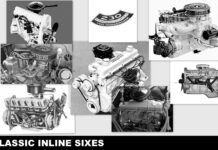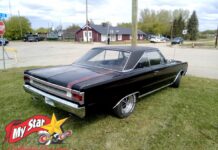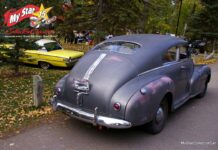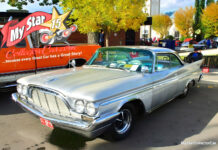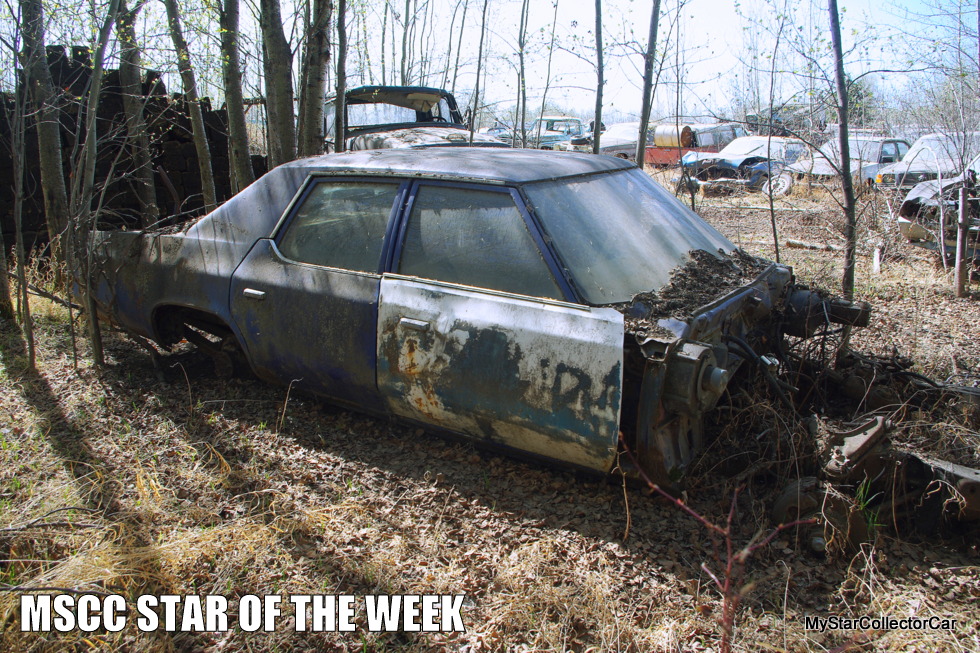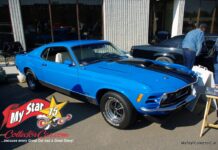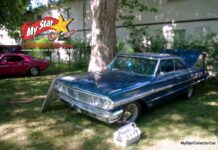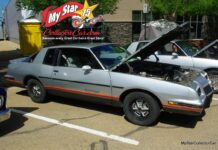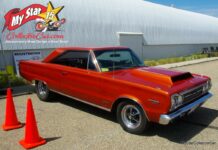The most common interpretation for the term “Junk in your trunk” come from its use in 1990s pop culture as a euphemism for a giant human rear end.
Apparently, the term was initially used by a woman to describe her large caboose on the Jerry Springer show, a program made famous because of its unswerving dedication to intellectual and tasteful topics.
Jim Sutherland
“Junk in the trunk” has an entirely different meaning in the vintage car hobby. Basically, it means an old car’s trunk is literally filled with discarded or forgotten automotive-related items and can be a strong indication of the condition of the car.

Many car guys on TV and YouTube take a special interest in the trunk compartment of an old car because it may hold hidden secrets about the condition of the vehicle.

For example, a trunk that has an abundance of brake fluid containers indicates the old war pony may have problems caused by cylinder or brake line weaknesses, a hydraulic issue that severely limits its whoa-up abilities.
Too many motor oil containers point toward a very tired engine that may be living on borrowed time and has an insatiable addiction to petroleum-based lubricants. Ditto an overabundance of transmission fluid containers in an old car’s trunk.

Another red flag in an old car’s trunk is a generous supply of new and used parts. The immediate question is why does this old relic have car parts in its trunk and why do some parts not even belong on this car?
The easy answer is a trunk in an old car is a convenient storage unit for many car guys, so random parts are protected from theft and the elements when the lid closes on the trunk and locks them away from prying eyes. Right up to the point when the lost trunk key gets replaced by a flat screwdriver, a hammer, and an aggressive solution to the lost key issue.

The trunk may contain a mix of new and old parts, most likely related to the powertrain. Old parts indicate the owner replaced faulty ones, while new parts indicate the vehicle may desperately need the new ones at some point in the very near future. The main reason the new parts are still in the trunk may be related to the fact the owner is not ambitious and/or talented enough to install them.

Either way, an array of mechanical parts in a trunk indicates the old car is a ticking time bomb that may be ready to blow up and severely test the relationship between old car and owner. A very flat and ancient spare tire in a car that used to belong to Betty Rubble will also damage the bond.

Non-mechanical parts in the trunk are usually bling pieces that also may or may not belong to the old car. The shiny cosmetic pieces that do belong to the car may have been removed from its body when rust advanced to their former locations on the side of the car, evicted the bling, and set up camp.

Other parts found in a trunk may include original valve covers and factory radios that were replaced by sportier valve covers and stereo sound systems with FM, 8-track or cassette capabilities, depending upon the car’s age.

The final addition to an old car’s trunk might be rodent nests because mice and rats love to build large communities in vintage vehicles that are abandoned in the boonies or decrepit old buildings for too long.
The bigger the rodent community, the bigger the problems for car guys who want to resurrect an old car.
The final analysis? A peek in the trunk will answer many questions for car guys who want to get some history about an old car. But they may not like the answers.
Jim Sutherland
BY: Jim Sutherland
Jim Sutherland is a veteran automotive writer whose work has been published by many major print and online publications. The list includes Calgary Herald, The Truth About Cars, Red Deer Advocate, RPM Magazine, Edmonton Journal, Montreal Gazette, Windsor Star, Vancouver Province, and Post Media Wheels Section.
- CLICK HERE to Sign Up for the Newsletter
- CLICK HERE to Like us on Facebook
- CLICK HERE to Follow us on Twitter
- CLICK HERE to Follow us on Pinterest




